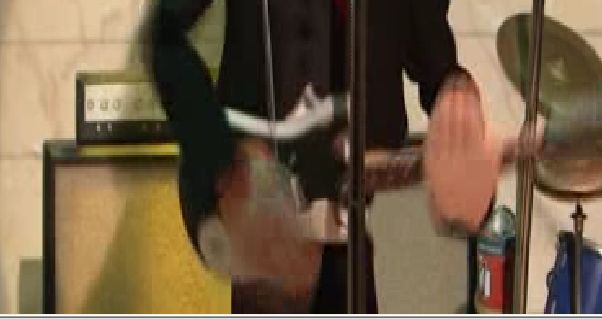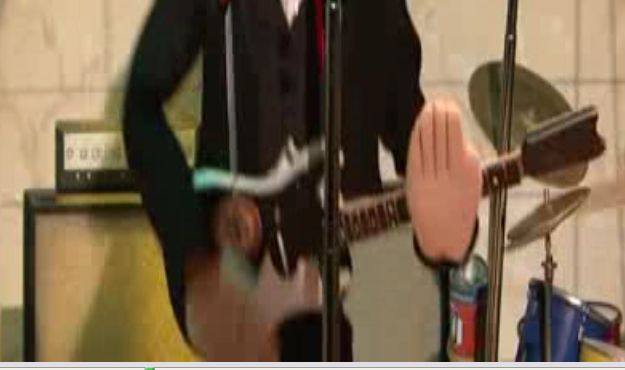I've been pretty startled by the natural look of bobbed 1080i source material. Especially when resized to a smaller dimension, the resulting video has a "life-like" quality to it that I haven't seen with traditional deinterlacing. Of course the video looks smooth and natural - it is running at 2x the frame rate of traditional video.
Here's my dumb question: Can "the bobbed look" be emulated at "normal" (in my case 29.97) frame rates ?
2MB Examples
Here's an example using Tdeint(1) for bobbed output:
bob_59.94.avi
Here's an example using Tdeint(2) for bobbed output, blended to return to 29.97fps
blend_bob_29.97.avi
Finally, here's the traditional field discarding technique (fast, but missing 1/2 the info):
sepfields_29.97.avi
+ Reply to Thread
Results 1 to 6 of 6
-
-
I'm not following. 1080i is interlace. It has a field every 59.94 Hz and two fields every 29.97 Hz.
SNL is broadcast in 1080i.
Are you trying to turn 1080i into 1080p?
Bob will create motion artifacts without motion adaptive algorithms. Better to keep it interlaced. -
Yes, basically trying to turn 1080i into p (640x352p). Not a fan of interlaced material, and as you can see, the 640x352p at 59.94fps is superior in both movement and image quality to the more traditional de-interlacing methods. The hurdle is trying to get a 29.97fps deinterlaced result with similar visual and motion characteristics as the topmost example.
-
Well, at 1080p you will see blend smears it out, blurs the motion of two fields into one.Originally Posted by Soopafresh

A bob will interpolate a frame per field. This is good during motion but blurs low motion areas.

A motion adaptive deinterlacer will use bob on moving pixel blocks and blend or other strategy on low motion areas to hold resolution.
If you're going to shink it to 640x352p, then these effects may get lost in the downscale.
If you are dropping motion resolution from 59.94 to 29.97 then sharp frames will look more jerky (less fluid with motion gaps). Blend fields will blur out during motion. -
Thanks very much for the examples, ed. You explained the problem much better than I could.
Indeed, the motion adaptive deinterlacers (mv_bob, mc_bob) provide some truly amazing results, at the price of some slowwww processing. I stumbled across a few lines originally written by Scharfis_Brain and modified it a bit for speed and sharpening.
This clips along at 5.5fps on my POS P4 2.4GHZ. Yes, it is blending, but not too bad on the eyes.Code:x=YV12InterlacedReduceBy2At60(1) #blend two NTSC-fields together (50:50 blend) a=x.trim(1,0).mergeluma(x,0.5).mergechroma(x,0.5) #blend three NTSC field together (25:50:25 blend) b1=x.deleteframe(0).mergeluma(x.duplicateframe(0),0.5).mergechroma(x.duplicateframe(0),0.5) b=b1.mergeluma(x,0.5).mergechroma(x,0.8).Gauss(0.5,-0.5) #concat them interleave(b,a) changefps(29.97)
I'll try it out on some different sources and see if it looks decent. Again, thanks
scharfi_blend.avi -
The trade off is fluid motion at 59.94 Hz. or half file size at 29.97 Hz. but with jerky or blurred motion.
Similar Threads
-
smooth slow motion
By nitrobaorder in forum EditingReplies: 22Last Post: 18th Oct 2010, 06:19 -
Deinterlacing or Motion Blur possibly?
By spiegel32 in forum EditingReplies: 9Last Post: 5th Sep 2009, 08:13 -
jerky motion when deinterlacing - out of sync when not?!
By robotjox in forum DVD RippingReplies: 0Last Post: 11th Jul 2009, 03:51 -
Smooth slow motion with old VHS footage
By stantheman1976 in forum EditingReplies: 3Last Post: 14th Apr 2009, 21:42 -
Projector Problem: Some videos smooth motion, others have "tearing&qu
By Xenogear900 in forum DVB / IPTVReplies: 16Last Post: 27th Jul 2008, 22:54




 Quote
Quote